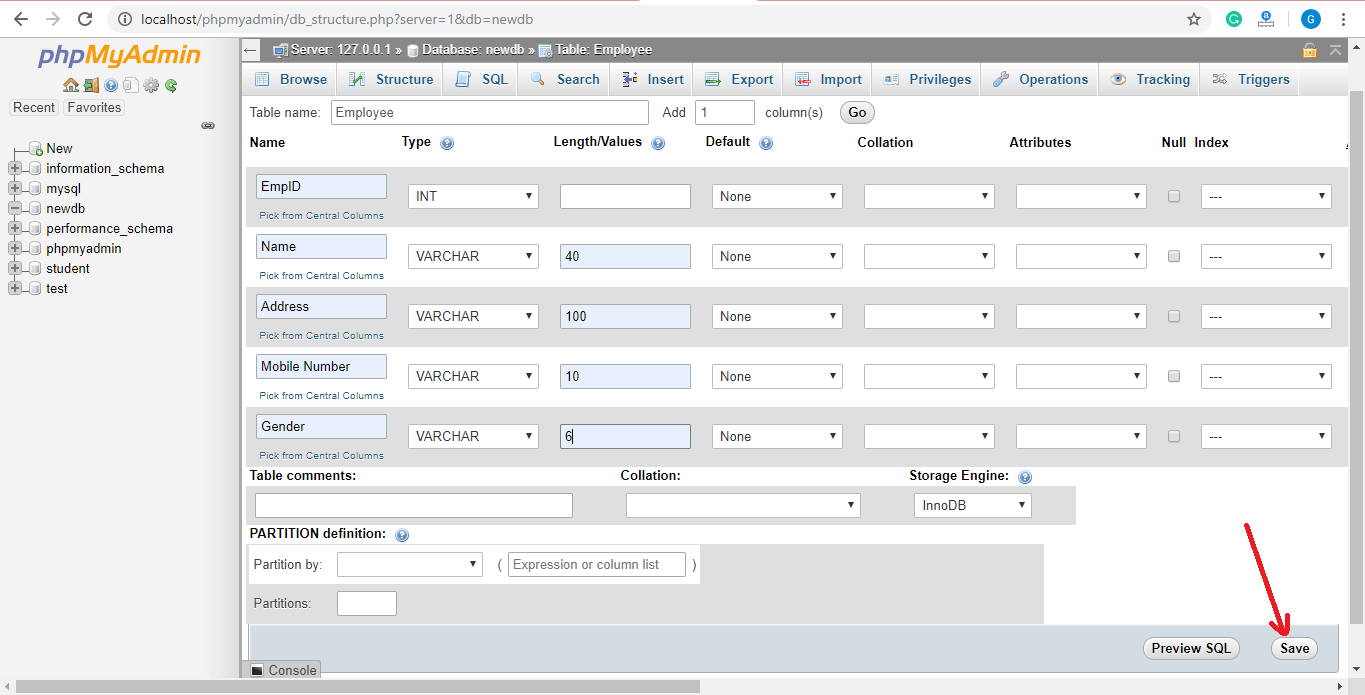
Another popular storage engine, used by many databases is InnoDB. The Engines tab opens a page with a list of all the engines supported by the MySQL server. In the Charsets tab you can find all the charsets and collations supported by the MySQL server. Note that you may not be able to change all the variable values as this is allowed only with the root user on the server. You can use the Edit button next to each of the variable names to edit the values of the variables. In the Variables tab you can see all the current MySQL variables and their values. You can customize what information to see in the different panels on the different pages, change the default preselected options on the Import and Export tabs and much more. In the Settings tab you can configure phpMyAdmin the way you want it to.

In this way you will skip the imported queries and continue from the point of the interruption.Īdditionally you can pick the SQL server mode of the imported file. Then you can continue with the data import defining the number of the queries to be skipped from the file beginning. In such a case you can interrupt the import action. If the file is too big, the MySQL server timeout can be reached. You can browse for the file to import and pick its character set from the drop-down menu. In the Import tab you can import database tables from a file, saved on your local computer. You can export the database tables in a file and compress it or you can visualize the queries directly on the screen. You can decide whether to export just the database structure, the data or both of them.

You can add custom comments in the header of the exported content. You can select all the database tables or just pick some of them. In the Export tab you can export your database tables content in different formats (CSV, SQL, PDF, Microsoft Excel, Microsoft Word, XML, and many more). You can see the traffic handled by the MySQL server, the maximum number of simultaneous connections, the total number of connections, the failed and the aborted attempts, the total number of queries sent to the server and more related details. In the Status tab you can find detailed information regarding the MySQL server since the last restart. Just type in the query and click the Go button and the phpMyAdmin tool will execute the query and provide the results from it. Using this tab you can perform a MySQL query towards the MySQL server. You will see a table with the used collations, the number of the tables and the rows, the size of the data and the indexes, the total size and the overhead. Once you click on a chosen database name, you can start managing that database. In the Databases tab you will find a list with all the databases which can be managed through the cPanel user. In the panel on the left side of the page you will see the list of the databases for which your cPanel user has privileges.Īt the top of the page you can see different tabs which allow you to perform different actions. In the middle part of the page, in the General Settings section, you can see the MySQL charset and you will be able to define the MySQL connection collation. In the other two sections - Web server and phpMyAdmin you can also see information regarding the MySQL server, the MySQL client and the phpMyAdmin version
#PHPMYADMIN TUTORIAL SOFTWARE#
The databases which you will manage are stored on the same server as the software and the hostname is - localhost. On the right side of the screen, in the Database server section you can find information about the MySQL server. With the help of this we can manage below mentioned topics

The application can be opened from cPanel -> phpMyAdmin tool. Transforming stored data into any format using a set of predefined functions, like displaying BLOB-data as image or download-linkĪll hosting accounts on the webhostingworld servers come with pre-installed phpMyAdmin software.Searching globally in a database or a subset of it.Ĝreating complex queries using Query-by-example (QBE).Ğxport data to various formats: CSV, SQL, XML, PDF, ISO/IEC 26300 - OpenDocument Text and Spreadsheet, Word, LATEX and others.O execute, edit and bookmark any SQL-statement, even batch-queries O maintenance server, databases and tables, with proposals on server configuration O create, copy, drop, rename and alter databases, tables, fields and indexes O browse and drop databases, tables, views, fields and indexes You can run MySQL queries, optimize, repair and check tables, change collation and execute other database management commands.Īll the WebHostingWorld clients can manage their MySQL databases through the pre-installed phpMyAdmin software which is integrated in cPanel. Through this software you can create, alter, drop, delete, import and export MySQL database tables. PhpMyAdmin is one of the most popular applications for MySQL database management. This tutorial covers the following topics:


 0 kommentar(er)
0 kommentar(er)
